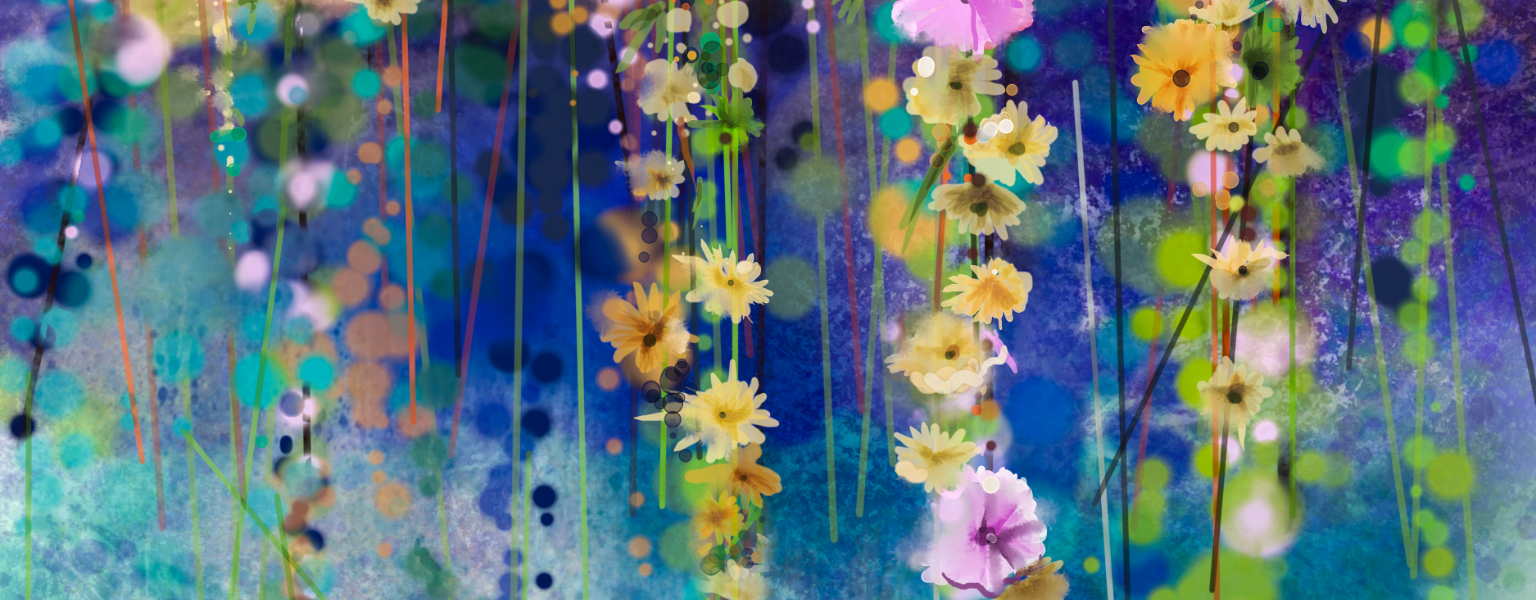
COVER Kevin Cheng Kai-man (Photo: Zed Leets / Tatler Hong Kong)
These artists are pursuing their dreams by channeling unique perspectives brought on by their conditions and paving the path for others
For those with disabilities, taking up art as a hobby, let alone a career, is a challenge. This is not due to their lack of capacity or talent but to how society offers limited support or underestimates their potential in general.
According to Ida Lam, chairperson of NGO Arts with the Disabled Association of Hong Kong (ADAHK), that can be anything from a scarcity of structured, comprehensive training for people with disabilities at the various stages of their artistic development; to how sign language isn’t commonly known in society; and how buildings may not have disability-friendly facilities and designs.
“The community thinks that people with disabilities in [the arts] are not really important,” she says. “This is a vicious cycle: because there is a lack of support and resources, you don’t see enough success stories [and so] only a few people with disabilities can achieve fulfilling results or become iconic figures for the community to look up to. [In turn,] you don’t attract enough general support or resources. The biggest challenge is changing people’s mindsets.”
But there are artists with disabilities in Hong Kong who are determined to and have made the arts their life and living. Artists working in three different genres tell Tatler about their journey to success and what they think Hong Kong should change to become a more inclusive city.
In case you missed it: The Weigh-in: Hong Kong is diverse, but is it inclusive?
Photographer Kevin Cheng Kai-man
A morning shot of Lion Rock emerging from a sea of clouds; an aerial image of orange headlights filling the dark blue highways and bridges in the evening; a snapshot taken from a low angle of Tokyo’s famous Shibuya crossing. Being a wheelchair user for most of his life has given local photographer Kevin Cheng Kai-man a unique perspective of life. Since he was six months old, Cheng has suffered from a collagen gene mutation, a rare genetic condition that led to abnormal bone and spine development, and several surgeries during his teenage years; today, he still has to go for regular check-ups.
But that has not stopped him from pursuing the artistic dream that began when he was a student at Hong Kong Red Cross John F. Kennedy Centre, a school for students with physical disabilities, and where he first realised that being in a wheelchair wasn’t a barrier to him pursuing his passion. “Art is fair. It’s judged for the quality and meaning of the artwork per se and not the person clicking the camera,” he says.
Now at 38, Cheng sees the advantages of his condition when it comes to his work. He says, “Because a wheelchair user’s perspective is constantly from a low angle, my works have a humourous and childlike quality, which has become my signature style.” He makes a living selling his works as prints and postcards online and at art events, including Fine Art Asia and the Affordable Art Fair. He has also participated in a number of photography and multimedia exhibitions hosted by the ADAHK, which supports more than 200 visual and performing artists with disabilities by offering them resources, and opportunities to exhibit and network.
In the last four years, he has taken his work to literally new heights—drone photography. Drones allow him to see from perspectives which his wheelchair prevents him from accessing, especially Lion Rock and Tai Mo Shan, which are his favourite subjects of his practice. “Hikers may be able to see the view from the hilltops but, like me, they cannot see the mountain range from a bird’s eye view,” he says. “I want to offer a different perspective of looking at Hong Kong.”
This latter statement is also a metaphor for what Cheng hopes people without disabilities will do more often. While he feels that public education and art exhibitions by disabled artists in the last ten years have planted the seed of a more inclusive mindset among the public, the government and art organisations need to do more to cater to minority needs. “For instance, why there are only wheelchair seats at the front or side of a theatre? I always have to be separated from my family and friends, even if we’re attending the same shows,” he says. “Society’s support for us can take a more humanistic view.”
Visual artists Sandy Poon and Matthew Yu


ABOVE Matthew Yu (Photo: Zed Leets / Tatler Hong Kong) / ABOVE Sandy Poon (Photo: courtesy of Sandy Poon)
Visual artists Sandy Poon and Matthew Yu are both in their late 20s, and both have autism. While they sometimes struggle to convey meaning through words, art has been a main source of joy and expression for as long as they can remember. Poon specialises in portraying Hong Kong culture and icons such as dim sum and Wan Chai’s Blue House in her watercolour paintings, while Yu’s style is more abstract, often depicting the co-existence of nature and human in imaginary contexts. Lately, he has also been experimenting with different materials such as coffee to make art.
The pair’s talents were discovered at a young age when they were studying at Buddhist To Chi Fat She Yeung Yat Lam Memorial School, a school for students with special educational needs, which referred them to the charity Keenable Creation. The charity, co-founded by lawyer Wanda Tong and business management consultant Chiu Lai Kuen, supports artists with special needs by offering art workshops, design courses and museum visits to hone their skills and increase their exposure to the industry.
Not all aspiring artists with disabilities are as fortunate, however. According to Lam at ADAHK, about 70 to 80 per cent of people with disabilities aren’t given adequate exposure to the arts, meaning they are unlikely to pursue a career in the field; at most, only 15 per cent are given the same opportunities as the rest of the public in terms of their involvement in the arts. “You can see that there is a huge gap,” she says. “From our perspective, in terms of equal opportunities, that situation is far from satisfactory.”

ABOVE Blue House by Sandy Poon (Image: courtesy of Sandy Poon)
The lack of understanding of people with disabilities adds another layer of hurdles to their potential employment in the field. But Poon and Yu’s condition can actually enhance their artistic abilities. “People with autism experience hypersensitivity to certain stimuli, such as certain light wavelength, [making] them very sensitive to colours. It is also common for them to have extreme attention to detail,” Tong explains. “These special features of autism will manifest in their artwork, which are often intensely colourful and intricate.”
Tong and her Keenable Creation team have been hard at work finding ways to create meaningful employment for artists with disabilities in Hong Kong. Some are given opportunities to showcase and sell their works at exhibitions, the proceeds of which go to running workshops for more artists. In August 2022, Keenable Creation partnered with the Affordable Art Fair to launch an NFT collection of 35 pieces created by artists both with and without disabilities, with proceeds going back into supporting the work of Keenable Creation and the artists who participated.
For Yu, he feels that more awareness is needed to create support for them, which can be done through things like advertising campaigns.
Pianists Lee Hin and Lee Shing

ABOVE From left: Lee Hin and Lee Shing (Photo: Tatler Hong Kong / Zed Leets)
Lee Shing’s fingers fly across the keyboard with ease and precision. Despite suffering from retinitis pigmentosa, a rare eye disease that causes partial or complete vision loss, since birth, he has a masterful control of the 88 keys. He and his elder brother Lee Hin are both classical pianists by profession and have performed at No Limits, a programme for performing artists with disabilities co-presented by Hong Kong Arts Festival and The Hong Kong Jockey Club Charities Trust.
Their journey has not been easy. It started when they were seeking hobbies. “Our parents thought music is more about hearing than seeing, so we tried the piano when I was 11,” Lee Hin recalls. The brothers, who were at first diagnosed with having low vision, a condition in which one’s impaired vision cannot be corrected by glasses, surgery or medication, by opticians who didn’t know what their genetic disorder was, remember the difficulty of reading already enlarged scores, and the time it took to learn the fingering as they struggled to see the keys. “The good thing is that this trained our hearing even more,” says the younger brother.
The success of megastar Stevie Wonder aside, Lee Hin says visually impaired individuals don’t commonly find work as musicians. “In truth, it’s pretty hard for us to look for jobs outside of centres that support the blind,” he says, and adds that he ever only knows one other visually impaired person to work outside of the community. “After much struggle, my friend got a job teaching English in a local school.”

ABOVE Lee Shing performing at No Limits 2022 (Photo: courtesy of No Limits)
Finding employment in the world of performing arts world doesn’t guarantee an easy ride. “I haven’t experienced blatant discrimination in Hong Kong, but there is a general lack of understanding of the needs of the visually impaired,” says Lee Shing. He names, for instance, times when the sighted production team wasn’t aware that the usual stage light effects caused discomfort to him as he is very sensitive to light; or when producers were unaware of the safety arrangements he needs on and off-stage as he cannot see the spaces clearly.
Both brothers, however, do feel that changes are being made gradually in the city. “In the past, passersby would find blind people a strange sight, and would occasionally avoid us in the street, which I don’t experience anymore,” says Lee Shing. Lee Hin adds that while it was tricky for the brothers when they were young to find teachers, as many felt unqualified to teach blind students, there are now more educational opportunities; the Hong Kong Academy for Performing Arts, for example, has in recent years given places to visually impaired artists.
There are also arts festivals which help to draw public attention to the needs—and existence—of artists with disabilities. No Limits, launched in 2019, for example, spotlights about 60 disabled performers. Lee Shing says that seeing a blind person playing the piano “upends stereotypical views of the audience—and even performers who may have a different view about their own abilities”. The next step, Lee Hin feels, is for the government to put more resources into making braille music more widely available.
Lee Shing will have a solo concert as part of No Limits 2024, while Lee Hin will take part in a drama produced by iStage, a nonprofit arts organisation, that will be staged for four months in different schools around Hong Kong starting in October. Both brothers will continue their careers as performing pianists and teachers— of students both with and without visual impairment.
“A lot of visually impaired children show potential for music,” says Lee Hin. “I want to use my personal experience to encourage them to pursue their passions and talents with my personal experience.”
Date: 13th September 2023
Media:Tatler





